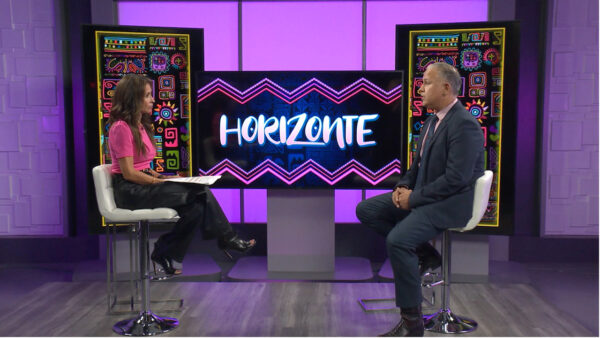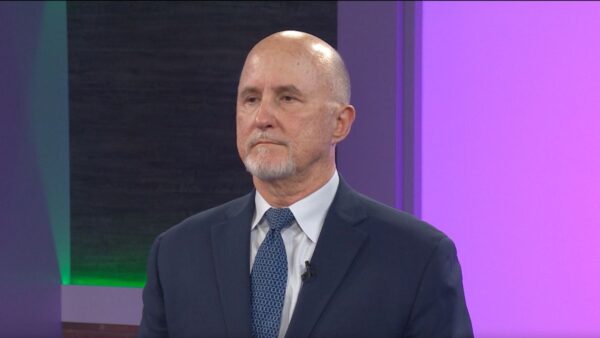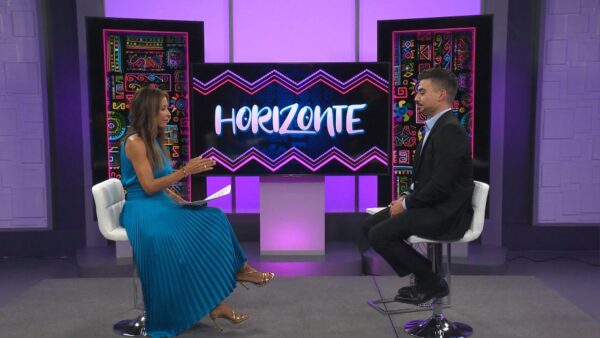A report by ASU’s Morrison Institute for Public Policy shows Arizona’s Latino education gap could harm the state’s economic future. ASU Morrison Institute for Public Policy Senior Policy Analysts Bill Hart and C.J. Eisenbarth Hager discuss details of the report.
José Cárdenas: A new report says Arizona hasn't made much progress in closing the education gap for latinos in the past decade. The data reveals consequences to the state's economy if nothing changes. The report released by Arizona State University's Morrison Institute for Public Policy is called, "Dropped? Latino education and Arizona's economic future". With me to talk about the information is Bill Hart, senior policy analyst and C.J. Eisenbarth Hager, senior policy analyst. Both with the Morrison institute for public policy at ASU. Welcome to both of you. When I read the title, it's a question mark. But the work you did in terms of analyzing where we've come in the last 10 years indicated that probably the answer is yes, it has been dropped because we haven't made any progress.
C.J. Eisenbarth Hager: Definitely we haven't made any progress on closing the achievement gap for Latino students. It's still a question because we have a large proportion of our Latino population are still in the k-12 system. About 41% of all Latinos are under the age of 19. We still have a chance to improve our workforce of our future but we need to start now.
José Cárdenas: But what do the demographics tell us about how much more serious the problem may be now even if there has been no change and no change is not a good thing but the gap is about the same. The changing demographics make it even worse, don't they?
Bill Hart: And this report is really in essence about demographics as much or more than anything else. The fact is that the Hispanic population of Arizona is growing very quickly as the white population is shrinking. This is a nationwide phenomenon. And if we have a lack of educational attainment on the part of Latinos and have not improved it over the last 10 years, that's going to mean that an increasingly larger share of Arizona's population going forward will be not as educated and not as economically advantaged as we would hope.
José Cárdenas: That was one of the points that was driven home in the presentation that it's not just a question of whether the Latino population progresses and whether they're better off or worse off in the future. Everybody's going to be worse off.
C.J. Eisenbarth Hager: Exactly, exactly. We looked at the next several decades and if the trends on education continue, how that will affect everyone. And one of the more striking results that we have was that average income for all Arizonans will remain stagnant if we don't address the attainment gap of Latinos.
José Cárdenas: And that's true even if you isolate the different groups. It's not that the average knows down because you have a bigger Latino population and they're not doing well. Even the white, non-Latino population will be doing worse if you look at that.
C.J. Eisenbarth Hager: Exactly, exactly, all Arizonans and white Arizonans will do worse as far as their income goes if we change nothing.
José Cárdenas: At the unveiling of the reporting with you had a guest speaker, a very prominent and famous demographer. You mentioned that this is a national issue and that's something he really drove home.
Bill Hart: It was Steve Murdock, now at rice university in Texas. Used to be director of the census bureau and he and his team did a study similar to this. In fact, it was partially our inspiration to do this in Texas a number of years ago and found exactly the same result. In his address and his speeches about this, talks about -- warns the very same things that we're talking about.
José Cárdenas: Part of this is the difference in birth rates for the different ethnic groups.
Bill Hart: Besides growing more quickly, the Hispanic population is younger and that's crucial because they're our future. So you're having a large, rapidly growing young Latino population. More our future leaders and workers in Arizona, Texas, other places like that.
C.J. Eisenbarth Hager: You only have to look at the median age for Latinos and whites in Arizona. The median age for Latinos in Arizona is 25. The median age for whites is 44. So you have folks that are just entering their child-bearing years in the midst of that versus whites who are now past that point.
José Cárdenas: One of the things that Murdock stressed was that while we would call ourselves a nation of immigrants, the truth is we've always hated immigrants, whether it was Germans, Italians, Irish, but we need immigration to succeed.
C.J. Eisenbarth Hager: Exactly. Exactly. That these are -- again, the Latinos are really driving the population increase. If you look at population change over the past decade, we would have lost population if we were only looking at white families here in Arizona. Our growth was really fueled by Latino families.
José Cárdenas: And not just Latino immigrants. It's the higher Latino birth rate and one point that was made at the discussion last week was that the issues and the gaps aren't just attributable to the fact that we have recent immigrants. These are multi-generational Latino families here who are not catching up.
Bill Hart: Right, and the immigration issue is really disconnected from the this issue, the most telling statistic is that I believe it's 97% of all Latino children in Arizona under five are U.S. citizens, whether their parents were undocumented or documented or a blend, they're U.S. citizens. We're not talking about immigrants.
José Cárdenas: What's going to happen going forward? What can be done to close the gap?
C.J. Eisenbarth Hager: A number of the experts that we really talked to said that early childhood education is really key, particularly for the Latino population, that a year or two before kindergarten will really help acclimate Latino children to school.
José Cárdenas: And bill, given the fact that there seems to be such a strong anti-immigrant sentiment in this state right now, is it realistic to think that anybody at the legislature is going to care enough to provide more funding for these efforts?
Bill Hart: That's a very good question. I hope so, because two issues that you raise are key. One is funding. This is going to cost money if we're going to really improve our educational system. And secondly the people we will be most embracing in a sense will be children, many of whom are children of undocumented immigrants, and that's not a sentiment that's very popular in this state today.
José Cárdenas: C.J., last question. There was a panel question. Give us a sense for what their thoughts were.
C.J. Eisenbarth Hager: They really focused on the future workforce of Arizona and the future workforce will be Latino. If the trends continue with the attainment gap as employers, they're going to have less skilled, less qualified employees to choose from. So they're very concerned. In fact, later this week, we'll be speaking at the Arizona Hispanic chamber of commerce luncheon about this issue. A lot of businesses are very concerned about this.
José Cárdenas: Thank you both for joining us on "Horizonte" to talk about. That is our show for this Thursday night, from all of us here at "Horizonte." I'm José Cárdenas, have a good evening.
Bill Hart:Senior Policy Analyst, ASU Morrison Institute for Public Policy; C.J. Eisenbarth Hager:Senior Policy Analyst, ASU Morrison Institute for Public Policy;




















